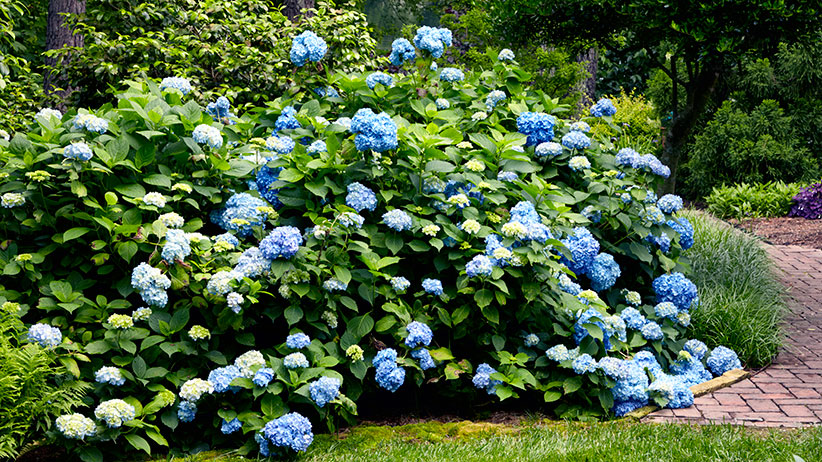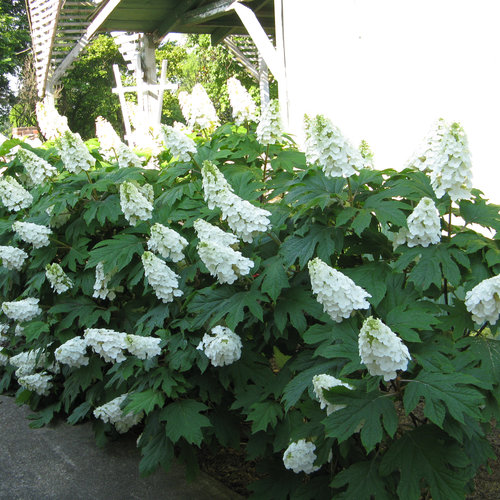Hydrangeas: The Showstopping Blooms That Will Brighten Your Garden
Hydrangeas: The Show-Stopping Blooms That Will Brighten Your Garden
Hydrangeas are some of the most popular flowers in the world, and for good reason. They come in a wide variety of colors, sizes, and shapes, and they can be grown in a variety of conditions. Whether you're a beginner gardener or a seasoned pro, hydrangeas are a great addition to any garden.
In this blog post, we'll discuss everything you need to know about hydrangeas, including:
- Different types of hydrangeas
- How to choose the right hydrangea for your garden
- How to plant and care for hydrangeas
- How to deadhead hydrangeas
- How to overwinter hydrangeas
Types of Hydrangeas
There are many different types of hydrangeas, but some of the most popular include:
- Bigleaf hydrangeas: These are the classic hydrangeas with large, round blooms. They come in a variety of colors, including blue, pink, white, and purple.

- Mophead hydrangeas: These hydrangeas have large, round blooms that are similar to bigleaf hydrangeas, but they have a looser, more mop-like appearance.
- Peegee hydrangeas: These hydrangeas have tall, narrow panicles of blooms. They are typically blue or pink, but they can also be white.

- Oakleaf hydrangeas: These hydrangeas have large, oak-shaped leaves and clusters of small, white flowers.

- Smooth hydrangeas: These hydrangeas have smooth leaves and clusters of small, white flowers.

Choosing the Right Hydrangea for Your Garden
When choosing a hydrangea for your garden, there are a few factors to consider:
- Sunlight: Hydrangeas need partial shade to full sun. Too much sun will make the leaves turn brown, and too little sun will prevent the flowers from blooming.
- Soil: Hydrangeas prefer moist, well-drained soil. If your soil is too sandy, add some compost or peat moss to improve drainage.
- Hardiness zone: Hydrangeas are hardy in zones 3 to 9. If you live in a colder climate, choose a hardy variety.
Planting and Caring for Hydrangeas
Hydrangeas are relatively easy to plant and care for. Here are some tips:
- Plant hydrangeas in the spring or fall.
- Dig a hole that is twice the width of the root ball.
- Amend the soil with compost or peat moss.
- Place the hydrangea in the hole and backfill with soil.
- Water the hydrangea well.
Hydrangeas need regular watering, especially during the first year after planting. They also benefit from fertilizing in the spring and fall.
Deadheading Hydrangeas
Deadheading hydrangeas is important to encourage new blooms. To deadhead a hydrangea, simply remove the spent blooms. You can do this with your fingers or with a pair of sharp scissors.
Overwintering Hydrangeas
If you live in a colder climate, you may need to overwinter your hydrangeas. To do this, follow these steps:
- In the fall, cut back the hydrangea to about 6 inches tall.
- Mulch the hydrangea with a layer of 2 to 3 inches of organic matter.
- Cover the hydrangea with a burlap sack or other protective covering.
Conclusion
Hydrangeas are beautiful, versatile flowers that can add a touch of elegance to any garden. With a little care, hydrangeas will thrive for many years to come.
Hydrangeas are beautiful, versatile flowers that can add a touch of elegance to any garden. If you're looking for hydrangea flowers for sale, I recommend visiting . This website offers a wide variety of hydrangeas, including both classic and rare varieties. You can find hydrangeas in a variety of colors, including blue, pink, white, and purple. You can also find hydrangeas in different sizes, from small shrubs to large trees.
In addition to their beauty, hydrangeas are also relatively easy to care for. They prefer full sun, but they can also tolerate partial shade. Hydrangeas are also drought-tolerant, so they don't require a lot of water.
If you're looking for a beautiful and low-maintenance flower, I encourage you to visit . You're sure to find the perfect hydrangea for your garden.
FAQ of hydrangea flowers for sale
FAQ: Hydrangea Flowers for Sale
1. What are the different types of hydrangeas?
There are many different types of hydrangeas, but some of the most popular include:
- Bigleaf hydrangeas: These hydrangeas are known for their large, showy blooms. They are typically blue or pink, but the color can vary depending on the soil pH.
- Mound hydrangeas: These hydrangeas are smaller than bigleaf hydrangeas, but they are just as beautiful. They are typically white or pink, and they bloom in late summer or early fall.
- Panicle hydrangeas: These hydrangeas are known for their tall, airy blooms. They are typically white or pink, and they bloom in late summer or early fall.
- Smooth hydrangeas: These hydrangeas are native to North America, and they are known for their delicate, bell-shaped blooms. They are typically white or pink, and they bloom in late summer or early fall.
2. When is the best time to buy hydrangeas?
The best time to buy hydrangeas is in the spring or fall. This is when they are most likely to be in bloom, so you can see what type of flowers you are getting. You can also buy hydrangeas in the winter, but they may not be in bloom at that time.
3. How do I care for hydrangeas?
Hydrangeas are relatively easy to care for, but they do need some special attention. They need full sun or partial shade, and they need moist, well-drained soil. You should fertilize them once a month during the growing season, and you should deadhead the flowers after they have bloomed.
4. What are some common problems with hydrangeas?
Some common problems with hydrangeas include:
- Leaf spot: This is a fungal disease that can cause brown or black spots on the leaves.
- Root rot: This is a fungal disease that can cause the roots to decay.
- Aphids: These small insects can suck the sap from the leaves, causing them to wilt and die.
- Scale: These small insects can attach themselves to the stems and leaves, causing them to look unsightly.
5. How long do hydrangeas last?
Hydrangeas can last for many years if they are properly cared for. Some hydrangeas can even live for up to 50 years.
Post a Comment for "Hydrangeas: The Showstopping Blooms That Will Brighten Your Garden"